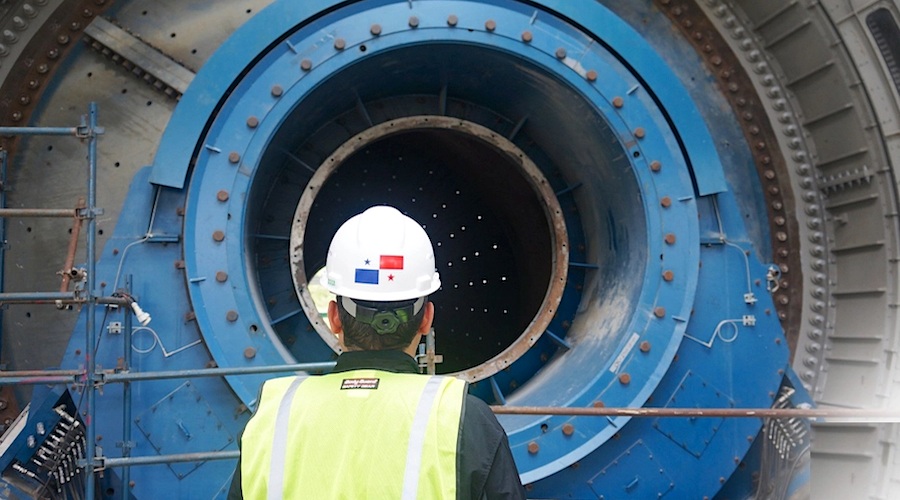How to Spot Undervalued Altcoins in 2025: A Beginner’s Guide to Smart Crypto Research

Guest Contribution – Finding an undervalued altcoin feels like spotting a small startup before it turns into a giant. These tokens trade below their true worth, but unlike company stocks, crypto projects lack clear valuation models, making research essential.
An altcoin is any cryptocurrency other than Bitcoin. Some power gaming or DeFi platforms with working products and real users; others rely on hype alone. The challenge is identifying genuine value before the crowd does.
Take Litecoin. Often overlooked despite its speed, low fees, and decade-long reliability. It shows that solid, established projects can stay undervalued simply because attention shifts elsewhere. If you’re curious to learn through experience, you can buy Litecoin via Changelly to explore how a proven altcoin operates before moving to newer, riskier assets.
This guide will help you evaluate such opportunities with tools, examples, and practical risk checks, so you can think like a researcher, not a speculator.
What Makes an Altcoin “Undervalued”?
An undervalued altcoin isn’t simply one with a low price tag. What truly matters is the gap between a project’s intrinsic value—its real-world utility, revenue, or network strength—and its current market price.
Think of it like a small restaurant with great food but no advertising. The quality exists, but few people know about it. In crypto, that happens when strong fundamentals are overshadowed by hype around bigger coins.
Three pillars often define value:
- Market Capitalization – Calculated as token price × circulating supply. It shows scale, not necessarily worth. A $0.01 coin with billions of tokens can still be expensive overall.
- Utility and Adoption – Does the token power transactions, secure a network, or give holders voting rights? Real use leads to sustainable demand.
- Revenue and Ecosystem Growth – Projects earning fees or attracting developers signal active participation, which supports long-term value.
Timing also plays a role. Markets can take months to recognise progress, leaving opportunities for early observers. But that window cuts both ways: low visibility can also mean unproven economics or fragile demand.
The Due-Diligence Framework: 5 Key Checks
Researching an altcoin is like inspecting a used car, you don’t just glance at the paint; you check what’s under the hood. The same principle applies here: careful inspection prevents expensive mistakes.
Here are five checks every beginner should master before investing:
- Team and Founders – Real names matter. Look for transparent teams with verifiable experience and public track records. Anonymous developers aren’t always bad, but they add risk if issues arise.
- Roadmap and Product Progress – Promises are cheap. Confirm that features are being built, tested, and released. A stagnant GitHub or delayed updates can signal trouble.
- Tokenomics and Supply Schedule – Understand how tokens enter circulation. A small float today with massive future unlocks can flood the market and crush prices.
- Community and Developer Activity – Active Telegram, Discord, or GitHub channels often indicate genuine engagement. Fake volume or paid followers are red flags.
- Security and Audits – Check whether the project underwent third-party code audits. Smart contract flaws can drain entire treasuries overnight.
Each step helps you filter noise and focus on fundamentals. Strong research doesn’t guarantee profit, but it greatly reduces the odds of falling for hype-driven traps.
Tools & Metrics Beginners Can Use
Knowing what to check is one thing. Knowing how to check it is where real confidence begins. Fortunately, several free and easy-to-use tools can help you analyse altcoins without needing coding skills.
Start with CoinGecko or CoinMarketCap. They show market capitalisation, trading volume, and token supply, basic but vital indicators. A sudden jump in volume without news might suggest manipulation, while steady growth often reflects organic interest.
For deeper insights, explore DefiLlama for total value locked (TVL), how much capital is staked in a protocol. Etherscan and BscScan let you view on-chain transactions and wallet distribution, revealing whether tokens are held by many users or concentrated in a few hands.
You can also compare market cap to revenue using dashboards like Token Terminal. Projects generating consistent fees or on-chain income may be undervalued if their market cap is still modest.
Did you know some sites track vesting schedules to show when locked tokens will be released? That data helps you avoid buying right before a large supply increase.
These tools don’t predict price. They provide context, and context is what separates informed investing from guessing.
Example Walkthrough: Evaluating a Real Altcoin
Let’s put theory into practice. Imagine you’re assessing Chainlink (LINK), a project that connects smart contracts to real-world data, for instance, allowing DeFi apps to access accurate price feeds.
Step 1: Fundamentals. Chainlink solves a clear problem, reliable data for blockchain systems. It already partners with major players like Google Cloud, showing enterprise relevance.
Step 2: Metrics. The market cap hovers around several billion dollars, but usage metrics (number of active oracles, total value secured) keep growing faster than price. That’s one early indicator of potential undervaluation.
Step 3: Tokenomics. LINK has a fixed supply of 1 billion tokens, with most already circulating. That reduces future dilution risk, though staking rewards can slowly expand supply.
Step 4: Activity and Adoption. Developers consistently ship updates, and Chainlink’s cross-chain expansion (CCIP) keeps gaining traction.
Step 5: Risk Check. It’s still dependent on continued DeFi adoption and must maintain trust across networks.
Now compare this with a speculative meme token that has no product or roadmap. You’ll quickly see how fundamentals help distinguish substance from hype.
Evaluating one or two coins this way each month builds sharp, repeatable judgment.
Spotlight: Altcoins / Projects Worth Watching in 2025
Some cryptocurrencies survive hype cycles by solving real problems. Others fade when the spotlight shifts. Below are several projects that continue to attract developer interest and potential long-term relevance. None are guaranteed winners, treat them as learning examples, not buy signals.
Solana (SOL)
Solana’s reputation for speed and low fees makes it a go-to platform for decentralised applications (dApps), especially in gaming and DeFi. It processes thousands of transactions per second using a hybrid Proof-of-Stake and Proof-of-History mechanism, which records time between events to improve efficiency.
After severe outages in 2022, Solana upgraded its validator software and improved reliability. Its ecosystem now includes fast-growing apps like Jupiter Exchange and Tensor for NFTs. If adoption keeps rising, its undervaluation case comes from strong performance and expanding use beyond speculation.
Chainlink (LINK)
Think of Chainlink as the data bridge of crypto. It delivers off-chain information, such as prices, weather, or sports results, to smart contracts. Without this bridge, most blockchain apps couldn’t function.
In 2025, Chainlink’s Cross-Chain Interoperability Protocol (CCIP) aims to connect blockchains directly, allowing assets and data to move securely between them. This broader utility could increase LINK’s demand as fees grow with usage. The challenge? Maintaining decentralisation while scaling.
Cosmos (ATOM)
Cosmos calls itself the “Internet of Blockchains.” Its goal: help different blockchains talk to each other. Instead of one giant network, Cosmos promotes modularity, each app chain controls its economy but connects through the Inter-Blockchain Communication (IBC) protocol.
ATOM holders can stake their tokens to secure the network and earn rewards. Its undervaluation potential lies in increasing demand for interoperability as users grow frustrated with isolated ecosystems.
MakerDAO (MKR)
MakerDAO runs DAI, one of the longest-standing stablecoins backed by crypto and real-world assets. Recently, it began investing in government bonds and real estate via tokenised instruments, bringing traditional finance onto blockchain rails.
MKR’s value derives from governance power, holders decide how reserves are managed and earn revenue from system stability fees. As tokenised treasury markets expand, Maker’s hybrid model of crypto + real yield could attract institutions. Its risk lies in balancing decentralisation with exposure to real-world regulation.
Ondo Finance (ONDO)
Ondo tokenises U.S. Treasury securities, letting users earn on-chain yields linked to traditional assets. This model aligns with the rising Real-World Asset (RWA) trend, bridging DeFi with traditional investors.
If regulators continue clarifying rules for tokenised securities, Ondo’s approach could scale fast. But it faces compliance pressure and competition from giants like BlackRock entering the same space.
Sui (SUI)
Built by ex-Meta engineers, Sui focuses on fast transaction processing and object-based storage. Its Move programming language simplifies asset management for developers, reducing common blockchain bugs.
Sui’s network activity is growing, with gaming and NFT projects showing early traction. Its undervaluation thesis rests on technology strength and developer friendliness, though adoption is still early.
Litecoin (LTC)
Litecoin is often called Bitcoin’s “silver.” Created in 2011, it uses similar principles but with faster block times and lower transaction fees. It doesn’t aim to reinvent the wheel, it polishes it.
LTC’s longevity and wide acceptance in payment systems make it one of the most established cryptocurrencies still actively used for everyday transactions. Its recent upgrade, the MimbleWimble Extension Blocks (MWEB), adds optional privacy features while maintaining regulatory transparency.
Though not flashy, Litecoin’s reliability, liquidity, and continued support from merchants and exchanges give it quiet staying power. Its undervaluation case stems from being overshadowed by newer projects despite its solid infrastructure and consistent performance during market turbulence.
Together, these examples highlight a pattern: undervaluation often hides in infrastructure and utility, not hype. Focus on where real work happens, code, adoption, and partnerships, not just price charts.
Risks, Pitfalls & Survival Tips
Crypto’s biggest lesson? Even strong research can’t eliminate risk, it only manages it. Every investor faces the same uncertainty: innovation moves fast, but speculation moves faster.
1. Volatility and Emotional Decisions
Altcoins can rise 200% and fall 80% in weeks. Beginners often buy tops or panic-sell during dips. Setting limits beforehand helps avoid emotional reactions. Decide your entry, target, and stop-loss before investing a single dollar.
2. Rug Pulls and Scams
A rug pull happens when developers abandon a project and drain its liquidity, leaving holders with worthless tokens. Always verify audits, check team transparency, and avoid projects promising unrealistic returns.
3. Token Unlocks and Dilution
Many altcoins release new tokens over time to reward insiders or fund development. These unlocks can double supply overnight, crushing price. Websites like TokenUnlocks track these events.
4. Overexposure to One Project
Diversify. Even the most promising altcoin can fail due to hacks, regulations, or shifting trends. A balanced portfolio protects against total loss.
5. Blind Hype and Influencer Culture
Not every YouTube call or viral tweet equals insight. Ask: What’s the evidence? Responsible investors trust data, not personalities.
Remember, survival in crypto isn’t about perfect timing; it’s about staying in the game long enough to learn.
Conclusion: Building a Learning Mindset in Crypto
Finding undervalued altcoins isn’t about chasing quick profits. It’s about developing curiosity, patience, and pattern recognition. The best investors treat research as an ongoing habit, not a one-time event.
Start small. Track projects, not prices. Ask what problem each one solves, who uses it, and how it earns value. Over time, you’ll see that “undervaluation” often hides in consistent builders, not the loudest marketers.
Every tool and framework you’ve learned here—market-cap checks, on-chain analysis, tokenomics review—forms part of a personal toolkit. Apply it repeatedly. You’ll refine your instincts and spot red flags faster.
But stay humble. Even experienced analysts misjudge cycles. The difference between a beginner and a pro isn’t knowledge alone; it’s emotional discipline. Knowing when to sit out, reassess, or walk away is a skill, not a weakness.
Crypto rewards those who keep learning while protecting capital. The goal isn’t to find every hidden gem—it’s to stay solvent long enough to discover the ones that matter.
Stay curious. Stay cautious. Keep researching. The next undervalued project might already be building quietly beneath the noise.
________________________________________________________________________________________________________________
Advertisements placed in our Guest Contribution sections are in no way intended as endorsements of the advertised products, services, or related advertiser claims by NewsroomPanama.com, the website’s owners, affiliated societies, or the editors. Read more here.





